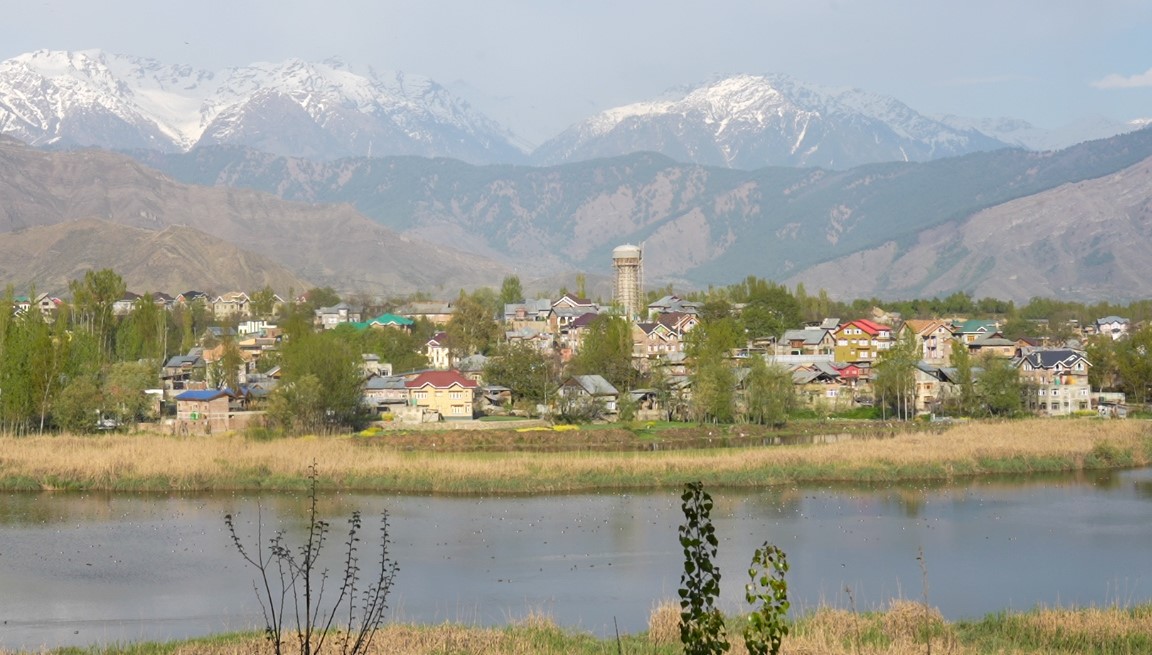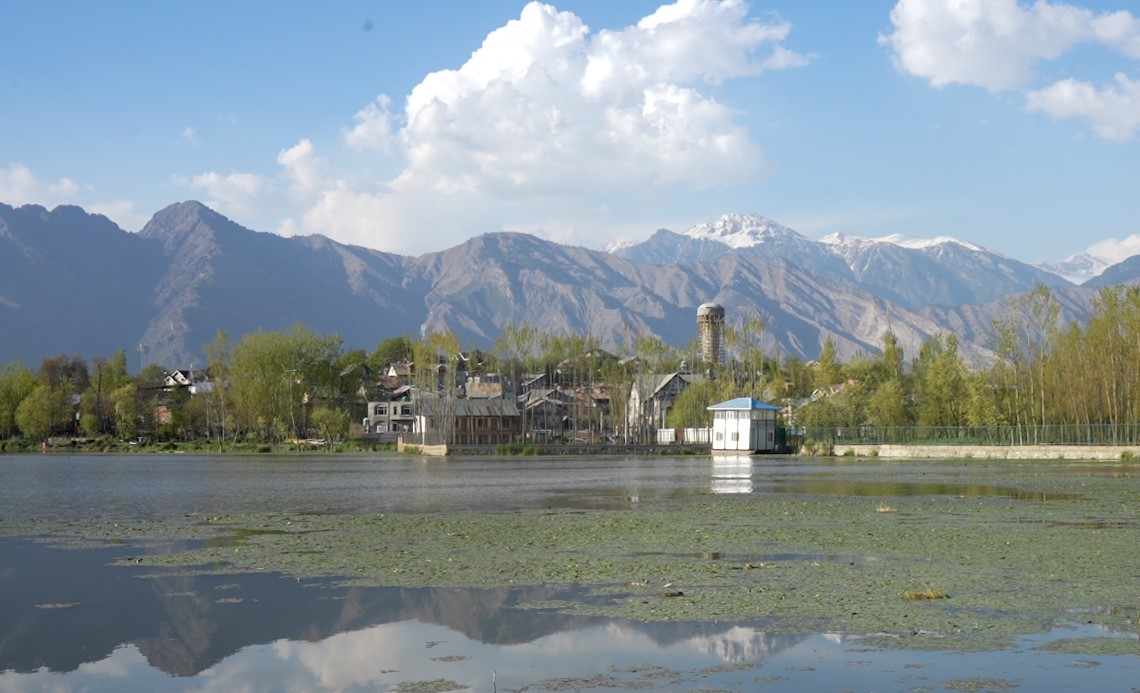Despite being distinct from almost every other wetland across Kashmir, Chatlam is off the radar. Host population believes that it can emerge as a key eco-tourism spot, given its cleanliness, diversity of fauna and the advantage of being spring and glacier-fed water body, reports Hashim Zakir
For Parvez Yousef, a master’s student residing in Chatlam, a village in Pampore periphery having a sprawling water body, the fight against hunting and poaching intensifies during the winter season. Gunshots break the silence as dusk settles, and poachers operate under the cover of darkness. Parvez and other young villagers promptly respond to any sound, even in the dead of night, chasing the poachers away.
Parvez has lived on the bank of this wetland since his childhood, and his fascination for this water body and its birds has always been strong. He reached out to various individuals and organisations to conserve this wetland.
“We started by educating the villagers and working from our own homes, taking lessons from the conditions of Hokersar, Brarinambal, Dal Lake, and other wetlands,” Parvaiz said.
A Forgotten Wetland
Locally known as Sarbal, the Chatlam wetland is a forgotten water body that desperately needs attention from the local community and the government.
Situated between the snowy Zabarwan hills and the Saffron fields of Pampore, Chatlam Wetland is a mere 2 km drive from Pampore. Spread over 850 kanals (429978 sq meters), this wetland attracts a variety of birds every winter, including Mallard, Common Teal, Leg Geese, Eurasian Wigeon, Ruddy Shelduck, and Gadwall. These avian visitors migrate to Chatlam due to food scarcity in other regions caused by freezing temperatures.
It plays a key role in contributing to an ecological balance in the belt. During floods, the Chatlam wetland plays a vital role in mitigating the risk by acting as a natural reservoir. During winters, tens of thousands of migratory birds breed in the wetland and feed on various plants that grow around.
An Activist
A Zoology student, Parvaiz has utilised his academic knowledge to create a checklist of Pampore wetlands and identified over 150 bird species. Alongside other knowledgeable birders, he spent months researching these birds and now teaches resident children, students, and interested individuals about their habitat, importance, and the significance of wetlands.
Parvez believes that there is immense potential to develop this place into an eco-tourism destination. “It offers multiple attractions, including winter bird watching, the blooming of thousands of wild tulips in spring, and the saffron harvest in autumn,” he said.
Parvez regrets that many people from the surrounding areas are still unaware of the wetland’s significance. “For me, the condition, crystal-clear water, and scenic beauty of Chatlam have no equal in the world,” explained Parvaiz.
Potential Destination
Chatlam offers a serene environment for visitors. The Wildlife Protection Department in collaboration with an NGO conducted an Asian water bird census this winter, counting a total of 95,146 birds. However, this unique ecosystem faces numerous threats.

Although hunting migratory birds is strictly prohibited under the Wildlife Protection Act of 1972, it remains a common occurrence during the winter season. Nonetheless, determined local youths diligently strive to transform Chatlam into a sustainable sanctuary for both birds and humans. They stay vigilant during the winters, combating poaching and promoting Chatlam as an eco-tourism destination.
The water body, however, suffers from anthropogenic stress due to urbanisation, agricultural practices, and unsustainable exploitation. Issues such as grazing, encroachment, water drainage for irrigation purposes, and the dumping of waste plague the wetland. These concerns were highlighted in a study Limnological Profile of a Suburban Wetland – Chatlam, Kashmir conducted by SY Parray, Sheeraz Ahmad, and SM. Zubair.
Overall, Chatlam’s preservation requires urgent action to conserve its fragile ecosystem, protect migratory birds, and address the threats it faces. By raising awareness, enforcing regulations, and fostering sustainable practices, Chatlam can reclaim its place as a sanctuary for nature and a source of wonder for visitors.
Biggest of Four Wetlands
Pampore is home to four wetlands, with Chaltam being the largest, followed by Fashkoori, Manibugh, and Krenchoo wetlands. These wetlands are also recognised in the National Wetland Atlas prepared by the Ministry of Environment and Forests, Government of India.
Unlike most of Kashmir’s wetlands, which are fed by the river Jhelum, Pampore wetlands are unique as they are highland wetlands that feed the river. Originating from springs and mountains in the surrounding area, these wetlands have a fluvial nature.
Chatlam wetland stands out for its cleanliness compared to other wetlands in Kashmir and provides an efficient habitat for wildlife and various physiological parameters
The other distinction is that the local youth, along with students from schools and colleges, actively participate in cleanliness drives in the vicinity of the Pampore wetlands. Additionally, they organise periodic plantation drives with the assistance of NGOs to maintain the cleanliness of the surrounding environment, considering the threats faced by these wetlands.
Official records indicate that Jammu, Kashmir, and Ladakh are home to over 500 bird species, including 32 endangered species.
Bird Watching
Chatlam Wetland plays a crucial role in hosting a diverse range of local and migratory bird species. Promoting Chatlam and similar wetlands as bird-watching sites has the potential to attract tourists and bird enthusiasts from around the world, the local activists said.
The water body is getting some tourists occasionally. Nadeem Ahmad, a passionate advocate for promoting Chatlam as an eco-tourism destination, expressed, “It’s a beautiful place in terms of structure, topography, and serenity. Everything about this place is perfect for people to come and visit. We do want tourists, but not at the cost of destroying this natural beauty.”
In 2022, Jammu and Kashmir received 18.8 million tourists. While tourism offers substantial economic benefits, concerns remain regarding its sustainability and impact on the fragile ecosystem.

Eco-tourism presents a solution to these environmental concerns. It focuses on observing nature and learning about the local community without causing harm to the ecosystem. Besides, it provides visitors with an environmentally friendly experience while also supporting the local economy.
Although eco-tourism is a relatively new concept in Kashmir, Chatlam’s natural and pristine state makes it a perfect candidate for its promotion. With limited infrastructure and untouched biodiversity, along with its captivating scenic views, Chatlam aligns well with the principles of eco-tourism.
Shallabugh wetland in Gandarbal, recognised as a Ramsar site last year, is already being promoted as a significant eco-tourism destination. Chief Secretary Arun Kumar Mehta, who visited the wetland recently, emphasised the need to create world-class eco-tourism amenities to attract visitors from around the globe.
“We have formed groups and are actively educating the locals about eco-tourism and its benefits. Despite minimal government support, we are determined to promote it as an eco-tourism destination with the help of NGOs. Our goal is to ensure sustainable tourism for future generations,” Nadeem said.














